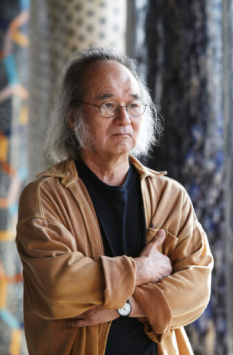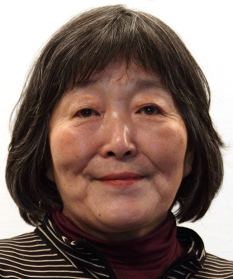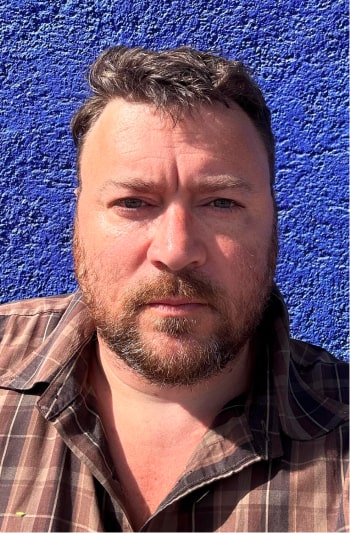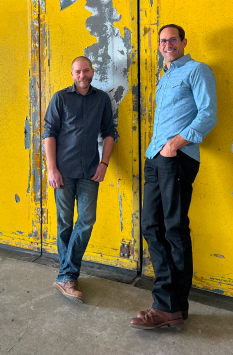New Ideas, New Interactions
Our thoughtfully curated art collection brings museum-quality pieces to your everyday experience, creating delightfully unexpected moments of inspiration throughout the building.
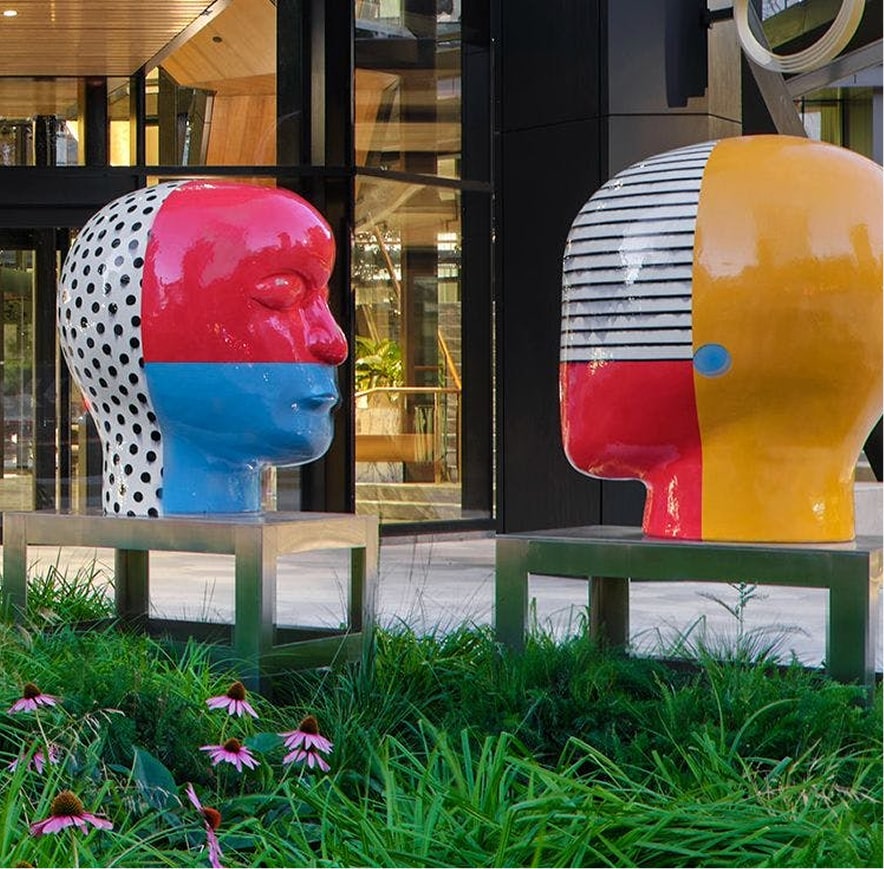
Jun Kaneko
Untitled, 2021
Glazed ceramics, stainless steel
Combining architectural space with art to address issues of scale, perspective and movement excites the artist. According to him, “Nothing exists alone. All objects exist in balance or contrast with one another and space is a primary element of their relationship.” Using the human figure as an abstract (but also familiar) shape can shrink the distance between observer and object. Making heads as a pair provides the opportunity to create a visual dynamic and suggest a relationship, which is largely influenced by the space between the two.
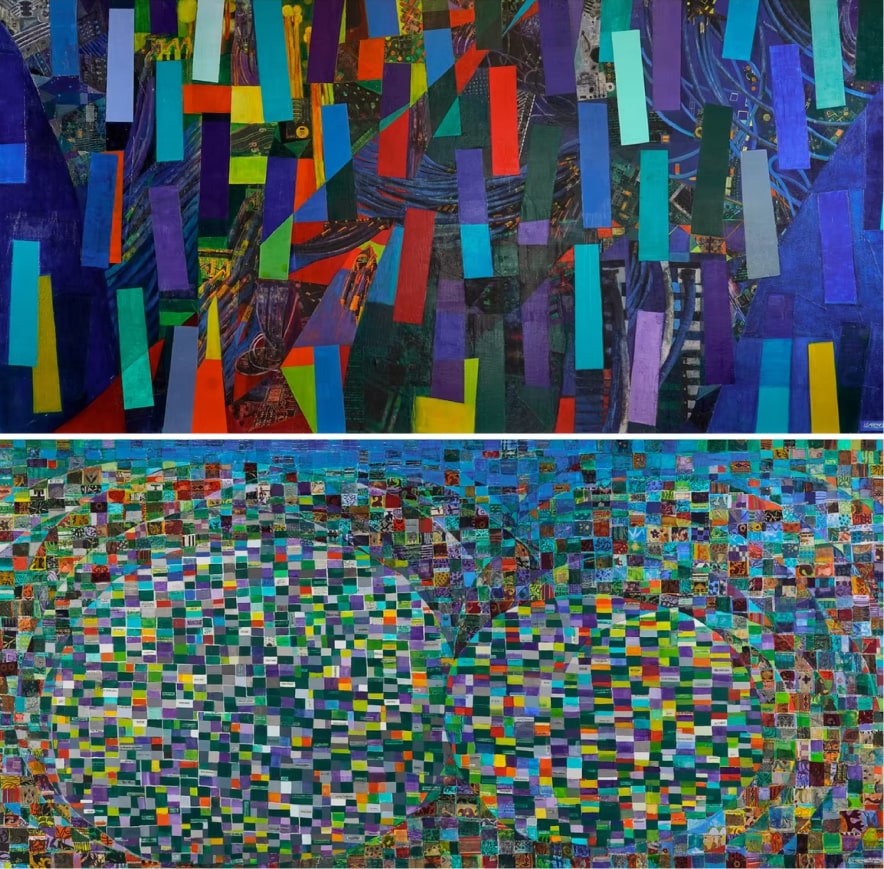
Keiko Hara
Topophilia at Eight, 2024
Mixed media, oil paint on canvas
This artwork continues the artist’s exploration of a theme she calls “Topophilia,” which describes a sense of place within each of us where an exceptional inner power resides. She believes that each individual’s “Topophilia” can connect people across cultural and political boundaries that might otherwise separate us. Using two paired canvases creates an opposed sense of space that is interactive, reflects a vital energy, supports inspiring possibilities, and is intended to provide comfort and reflection.
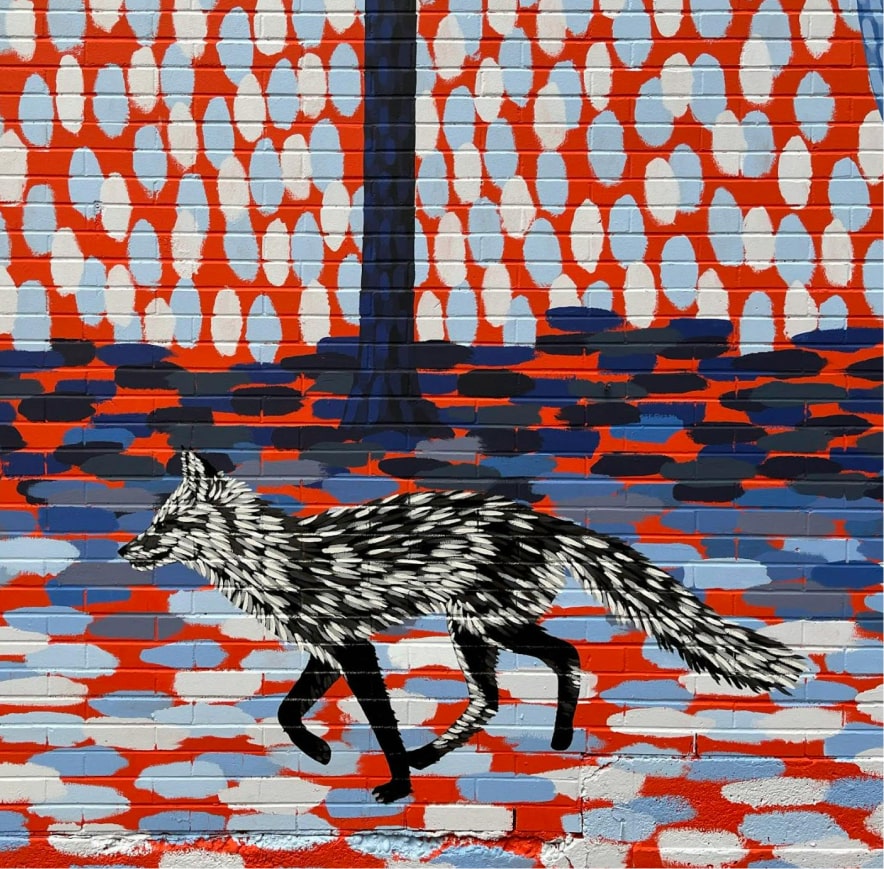
Baso Fibonacci
Ancient Forest, 2024
Acrylic paint
The artist explains: “Before Europeans came and altered the landscape of Bellevue to what you see around you, the Suquamish people lived on this land. This mural reflects the nature that existed before the genocide and subsequent development into the modern city of glass, steel and cement. The calming contrast of colors representing the forest and animals that roamed here is meant as a respite to the urban nature of the city.”
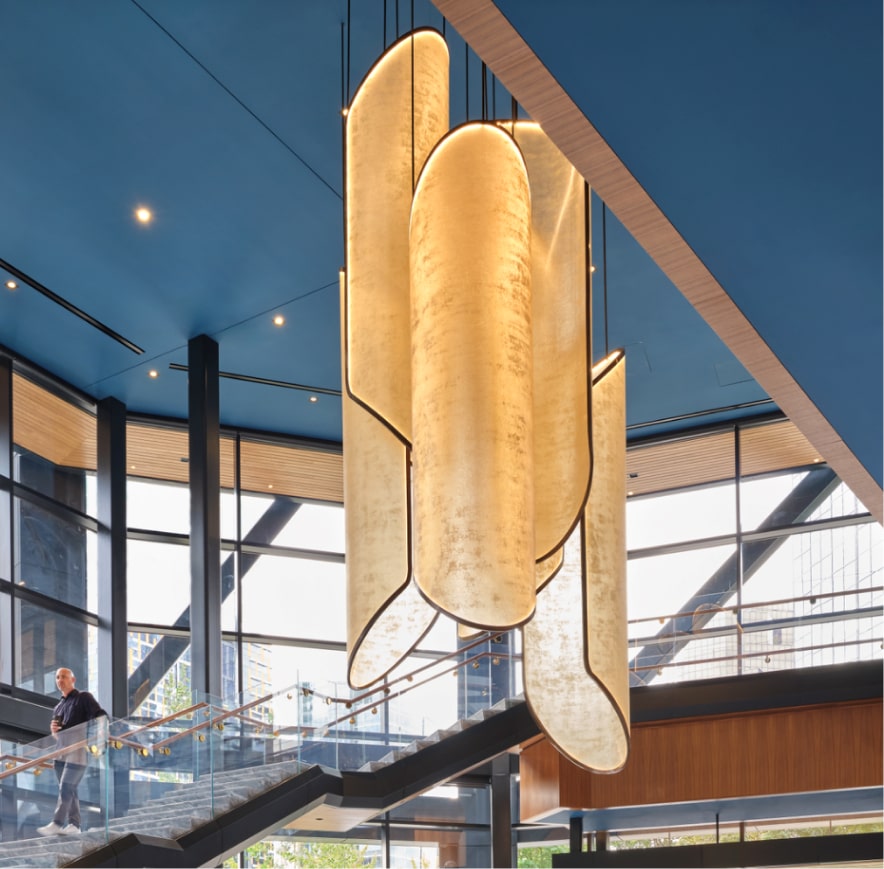
Nathan Warner and Buck Hubach (Warbach)
Lobby Light Installation, 2024
Fiberglass
As artists, Nathan Warner and Buck Hubach have always sought to engage the public in meaningful dialogue about the interplay between space, form, and human experience. The installation at The Eight, represents an extension of this vision — an exploration of how art can transform environments and invite reflection on our shared surroundings.
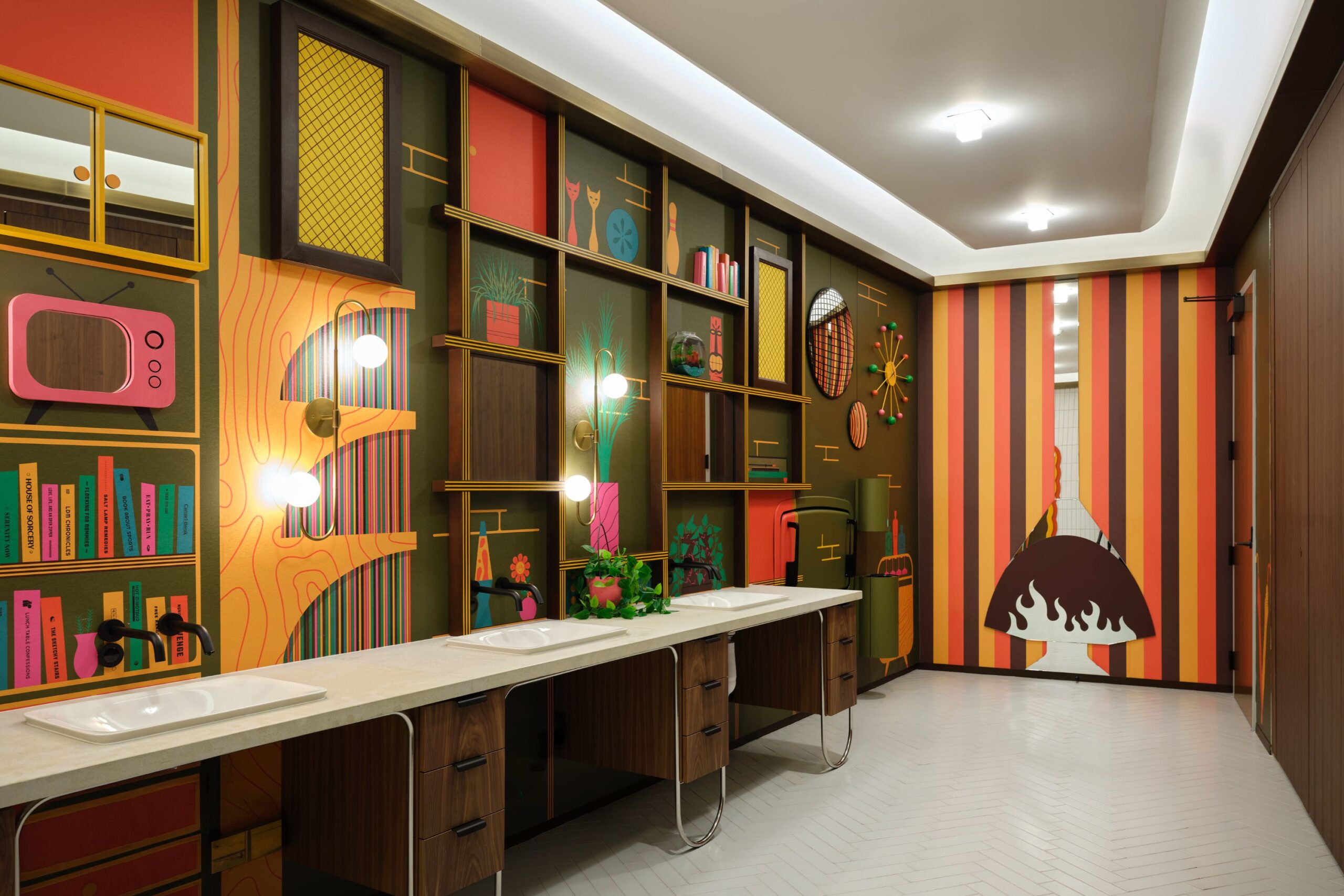
House of Sorcery
Paint The Room, 2024
Custom wallpaper, mirrors, and dimensional elements
As you step into “Paint The Room,” the walls embrace you with a perfectly crafted mid-century dream. Lush houseplants stretch across the space, vibrant and thriving. Retro-patterned wallpapers wrap the room in bold, nostalgic prints, creating an inviting rhythm. A bookshelf lined with retro books, vinyl records, and eclectic decor draws your attention—each item feels carefully chosen, echoing the room’s timeless charm.
House of Sorcery is a high-level, shape-shifting art and design studio that handles projects from concept to production. We apply an art lens to traditional processes to generate unconventional solutions for anything our clients throw our way. We make magic.
